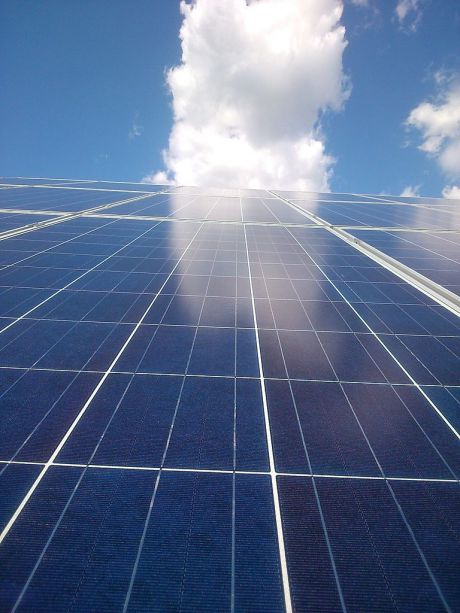Novel heat and power production in building-integrated photovoltaic panels

Photovoltaic_Panels
By Noggen13 (Own work) [CC BY-SA 4.0 (http://creativecommons.org/licenses/by-sa/4.0)], via Wikimedia Commons
Building-integrated photovoltaics (BIPVs) are PV modules that can be used to replace conventional building materials in parts of the building envelope, including the façade, roof or window. Important improvements in performance and cost could encourage widespread uptake.
While their potential to make a major contribution to the world's energy
challenge is great, BIPVs have been plagued by low efficiency, high
cost and ineffective heat removal. The EU-funded training project
BIPV-PCM-COGEN (A novel BIPV-PCM heat and power cogeneration system for
buildings) developed technology based on a phase-change material (PCM)
slurry that overcomes these barriers to widespread uptake.
The slurry is a mixture of microencapsulated PCM particles and water. Its optimal formulation was determined through a combination of experimental work and computer modelling for which dedicated software was developed. The slurry transfers heat away from the back of the PV modules to increase their efficiency. Dedicated heat exchangers transfer heat energy from the PCM slurry to a refrigerant used to ventilate the building and provide heat and hot water for domestic use. Any excess is stored and returned to the system on demand.
In laboratory tests of the prototype, the slurry module demonstrated a solar efficiency of 83.8 %. The module's electrical and thermal efficiency and system coefficient of performance increase with increasing turbulence of slurry flow. Not surprisingly, the BIPV-PCM-COGEN system produces more energy in southern Europe compared to northern Europe, mainly due to greater solar radiation and temperature.
A study of the relevant payback period of a BIPV system, a BIPV and water system, and the BIPV-PCM slurry system highlighted the economic superiority of the slurry system. In northern climates, the life-cycle cost of the PCM slurry system was not even 10 % of that of a conventional BIPV system. In southern Europe, the BIPV water system was best, but the differences were smaller.
Finally, in both climates the slurry system has the greatest potential of all BIPV systems studied to cut emissions relative to conventional combined heat and power (CHP) systems. In southern climates, it can cut emissions by almost 95 %, whereas in northern climates that number is approximately 40 %.
The BIPV-PCM-COGEN PCM slurry-based BIVP and integrated CHP system is a high-performance, cost-effective improvement to conventional BIPV systems. Its seamless integration into building façades and roofs around Europe could soon make an important contribution to the EU energy landscape.
published: 2016-01-13

